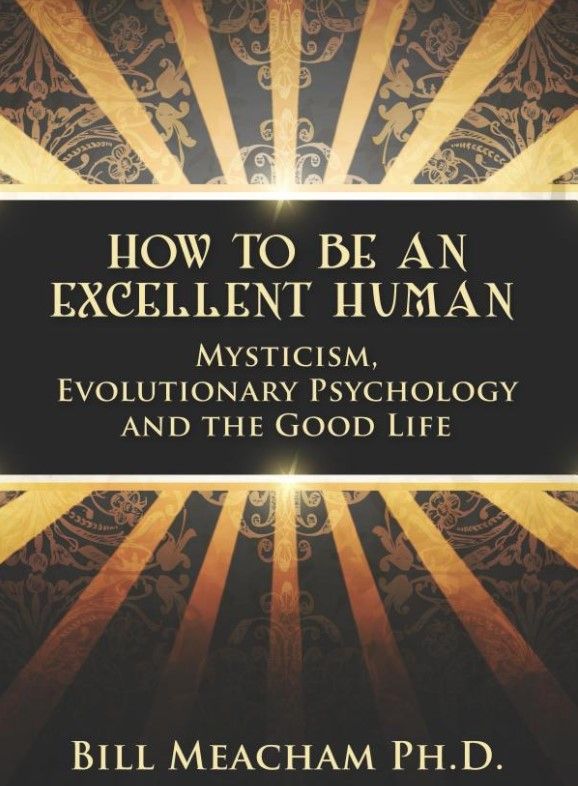Under The Hood
In order to understand the subjective self, it will be helpful to look “under the hood,” so to speak, at how episodes of being conscious are structured and how they work.(*) The subjective self, according to William James, is a person’s “inner or subjective being, [their] psychic faculties or dispositions.”(1) The subjective self, along with the physical self and the social self, is one aspect of the empirical self, our self as known to us and to others.
A standard method of investigating the subjective self, at which James was quite adept, is through introspection. A more rigorous way is phenomenology. I have discussed phenomenology elsewhere; here is a brief summary.
Phenomenology is biasless reflective examination of experience. It is a species of introspection, but it differs from introspection done from within what Edmund Husserl, the founder of phenomenology as a method, calls the “natural attitude,” the naive taken-for-granted outlook on the world that most of us occupy most of the time.(2) In the natural attitude you presuppose that the objective world exists even when you are not conscious of or thinking about it. To adopt a phenomenological attitude, you set aside questions of whether and in what way the world and things in it exist. That’s the biasless part. You don’t assert that they don’t exist, and you don’t assert that they do. You just examine in some detail your experience of them.
There is a difference between naively and straightforwardly experiencing something, say seeing a tree, and phenomenologically reflecting on that seeing. In the naive experience your attention is directed toward the tree. Certain interpretations or ideas about what you are looking at are present, but only operatively, in the background or “margin” of experience.(3) I mean interpretations such as that the object is a tree, that it is out there in the world perceivable by everyone, that if one walks around it one sees the other side, etc. Something is operative if it is present in and influencing the course of experience, but not focally, not in the spotlight of attention. “Operative” is contrasted to “thematic,” which means “present explicitly” or “focally attended to.”(4)
If you reflect on your experience of seeing a tree phenomenologically, you can make these operative interpretations thematic. You can notice them attentively along with the tree subjectively experienced through them. Thus you can apprehend the tree in a broader context, the context of the subjective elements that occur in your viewing of the tree.
Phenomenological reflection on an experience reveals the whole experience, not just its focal object. Husserl says that “reflection makes an object out of what was previously a subjective process.”(5) What was only operative, only in the background, in the original, un-reflected-upon experience becomes available for attentive inspection when you reflect on the experience.
And what do you (any of us) find there? Three components, which Husserl calls hyletic, noetic, and noematic.
The hyletic component is what Bertrand Russell and others in the analytic tradition call “sense data”: such things as colours, sounds, smells, hardnesses, roughnesses, and so on.(6) Husserl uses the Greek word for matter, hyle to mean the same thing.(7) Accordingly, I sometimes call it the material aspect of what we are conscious of. There’s quite a bit to say about the material qualities in experience, but that’s for another time, perhaps.
The noetic element, from the Greek nous, which means mind or intellect,(8) is what enables us to see discrete objects instead of mere colors and shapes. In a previous essay I used the “rabbit-duck” image, which can appear to be either a rabbit or a duck but not both at the same time, to illustrate the noetic element in episodes of being conscious. Another such image is the Necker Cube, a simple wire-frame, two dimensional drawing of a cube with no visual cues as to its orientation.(9)

If you look at it one way, you see it from the top. If you look at it another way, you see it from the bottom. But you don’t physically move in order to look at it in the two different ways. Something in your mind interprets it one way or the other. Husserl calls that mental something a “noesis” (plural “noeses”).(10) Noeses are cognitive elements that contribute significance to our experience such that we experience an orderly and coherent world of discrete objects, people, events, institutions, etc., instead of a chaotic flux of sensation. We can notice their effects in special cases, but we don’t usually pay attention to the noeses themselves. If we adopt a phenomenological stance, we can.
Husserl uses a related word, “noema” (plural “noemata”) to refer to the intentional object of our thought or perception, the tree in our example above. It is derived from a Greek word meaning “thought” or “what is thought about”.(11) Mind thinks by means of noeses, and what it thinks about are noemata. By “intentional object” I mean the object that the thought or perception is aimed at or directed toward. (“Intentional” comes from a Latin phrase meaning to aim an arrow at; it’s a technical philosophical term.)
The noema is the intentional object constituted from hyletic sense data by means of noeses. It is not the same as an actual physical object. The two views of the Necker cube are two different noemata. The pattern of black lines on a white background is the actual object that provides the hyletic component.
A woman I know was walking across her ranch one day and stepped over a vacuum cleaner hose. Then she thought “That’s odd. What is a vacuum cleaner hose doing here?” She turned and looked and saw that it was a snake. (Fortunately, she was wearing boots.) The snake had a grey and black pattern like the one on her vacuum cleaner hose at home. Before she recognized that it was a snake, her noeses had constituted their hyletic data into the noema that she perceived as a hose. Was it actually a hose? No. Did she really see a hose the first time? Yes, she did. That’s the power of noeses; they make us see things, often accurately but sometimes not.
But why should we care about this level of detail about what goes on in our experience? Well, the hope is that understanding will lead to wisdom.
Phenomenological investigation doesn’t initially come easy. In edge cases like the rabbit-duck and the Necker Cube the noetic elements are obvious, but in most of our everyday experience they aren’t. Adopting a phenomenological stance is a practice, and like any practice it works only if you do it. The more you do it, the better you get at it. But why make the effort?
Because in doing so you strengthen your ability to observe yourself in many ways, not just phenomenologically. Self-observation—which I call second-order thinking(12) and others refer to as meta-cognition or self-awareness—allows us to exert some control over who we are. We are a mixture of what Simone de Beauvoir calls freedom and facticity.(13) Facticity is just what we are and have little control over: the color of our eyes, how tall we are, the particular history that led us to where we are now. Our freedom consists in our ability to examine that facticity, to decide to change it if we can, and to go ahead and make the change.
Here’s a simple example. Suppose you have injured your shoulder, and it is stiff and painful. It lacks mobility. That’s a fact; it just is what it is. Your physical therapist prescribes certain exercises to loosen it, but it hurts to do them. That’s also just a fact. Your inclination is to avoid the exercises because they hurt. But you do them anyway, gritting your way through the pain, because you know that in the end the shoulder will have full mobility and function and won’t hurt anymore. That knowledge is the key to your freedom to change your body and improve your quality of life.
Here’s another, perhaps more cogent, example. Noeses are basically ideas that operate in the fringes or margins of our experience. The way we think of the world and what we believe to be true of it are highly influential factors in our perception of it. Being ideas, when made thematic and thought about our noeses are amenable to critical judgment. If we change our thoughts and beliefs, we change our perception of reality. And in doing so, at least in certain cases, we can actually change reality itself.
For instance, many people of European descent in Western industrialized nations feel uneasy, fearful or distrustful in the presence of someone with darker skin. That feeling is not the result of a reasoned judgment. It’s the result of social conditioning. Until you notice it, your perception of a person of color as menacing is constituted by noeses over which you have no control. They are a facticity. But once you notice your reactions and decide that they do not serve you well, you can change them. You can start by learning more about the history and psychology of racial tensions and by learning more about the cultures of the various people of color that you encounter. You can make efforts to get to know such people. You can discharge painful emotions that lock in your ideas and reactions. By changing your ideas, you change your noeses. People of color no longer appear menacing or distasteful. And in your interactions with them, they might begin to see you in a better light and change their behavior towards you.
This works a lot better in the social realm than in the physical realm. Confronted with a physical obstacle you may wish it away, but it won’t move by itself. In the social realm, however, you can change yourself and, with a bit of luck perhaps, change the way others perceive and act toward you.
The key to success is self-awareness. Inscribed on the temple to Apollo at Delphi were the words “Know Thyself.”(14) Phenomenology is one way to exercise this most human virtue.
Notes
(*) The phrase “under the hood” means something that is not immediately visible or obvious. It comes from the age of internal combustion engines and refers to the hood of a motor vehicle, which covers the engine.
(1) James, Principles of Psychology, Vol. I, chapter X, p. 296.
(2) Husserl, Ideas, section 27, tr. Kersten, p. 51. Boyce Gibson translates the phrase natürlicher Einstellung as “natural standpoint.”
(3) Husserl, Ideas tr. Boyce Gibson, p. 107.
(4) Zaner, The Way of Phenomenology, p. 115.
(5) Husserl, Cartesian Meditations, p. 34.
(6) Russell, The Problems of Philosophy, Chapter 1.
(7) Husserl, Ideas tr. Boyce Gibson, pp. 226-228.
(8) Encyclopedia Britannica, “Nous.”
(9) Wikipedia, “Necker cube”.
(10) Husserl, Ideas, pp. 228, 230-231.
(11) Wikipedia, “Noema.”
(12) Meacham, How To Be An Excellent Human, Chapter 20, “The Human Virtue.”
(13) deBeauvoir, The Ethics of Ambiguity. See also my summary of the book at https://www.bmeacham.com/blog/?p=451.
(14) Wikipedia, “Delphi.”
References
De Beauvoir, Simone. The Ethics of Ambiguity. On-line publication http://www.marxists.org/reference/subject/ethics/de-beauvoir/ambiguity/index.htm as of 6 October 2011.
Encyclopedia Britannica Online. “Nous.” Online publication https://www.britannica.com/topic/nous as of 19 April 2022.
Husserl, Edmund. Cartesian Meditations. Translated by Dorion Cairns. The Hague: Martinus Nijhoff, 1960.
Husserl, Edmund. Ideas Pertaining To A Pure Phenomenology And To A Phenomenological Philosophy. First Book: General Introduction To A Pure Phenomenology. Tr. F. Kersten. The Hague: Martinus Nijhoff Publishers, 1983. Online publication http://www.dhspriory.org/kenny/PhilTexts/Husserl/Ideas1.pdf as of 24 October 2015.
Husserl, Edmund. Ideas: General Introduction to Pure Phenomenology. Translated by W. R. Boyce Gibson. New York: Collier Books, 1967.
James, William. The Principles of Psychology, Vol. I. New York: Henry Holt and Company, 1918. Online publication https://www.gutenberg.org/files/57628/57628-h/57628-h.htm as of 16 November 2020.
Meacham, Bill. How To Be An Excellent Human: Mysticism, Evolutionary Psychology and the Good Life. Austin, Texas: Earth Harmony, 2013. Available at http://www.bmeacham.com/ExcellentHumanDownload.htm.
Russell, Bertrand. The Problems of Philosophy (Project Gutenberg edition). Online publication http://www.gutenberg.org/files/5827/5827-h/5827-h.htm as of 8 July 2018.
Wikipedia. “Delphi.” Online publication http://en.wikipedia.org/wiki/Delphi as of 10 May 2013.
Wikipedia. “Necker cube”. Online publication https://en.wikipedia.org/wiki/Necker_cube as of 17 April 2022.
Wikipedia. “Noema.” Online publication https://en.wikipedia.org/wiki/Noema as of 10 April 2022.
Zaner, Richard M. The Way of Phenomenology. Pegasus Books. Indianapolis: Bobbs-Merrill Publishing Co., 1970.

How To Be An Excellent Human
Mysticism, Evolutionary Psychology and the Good Life by Bill Beacham, Ph.D.

